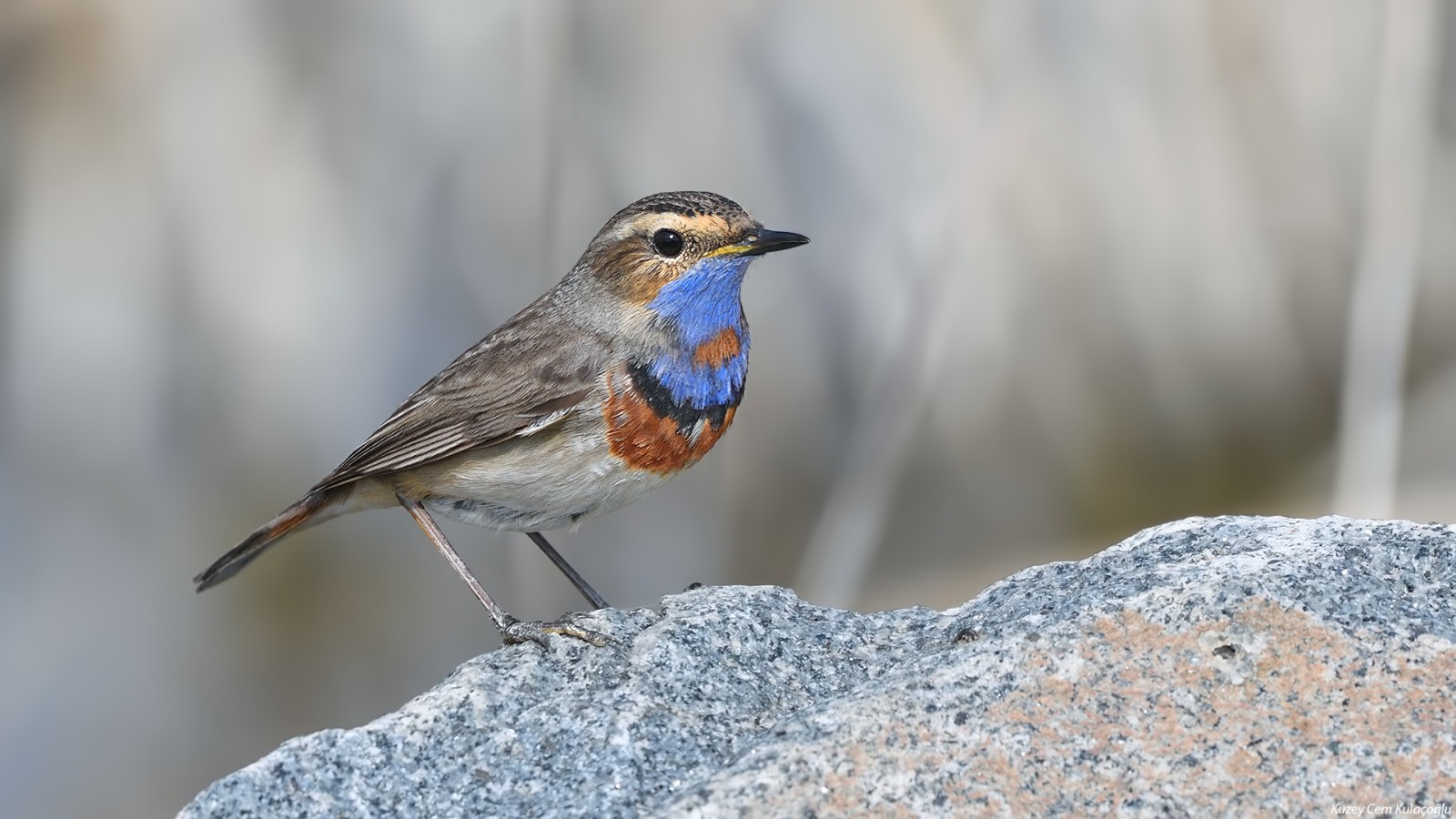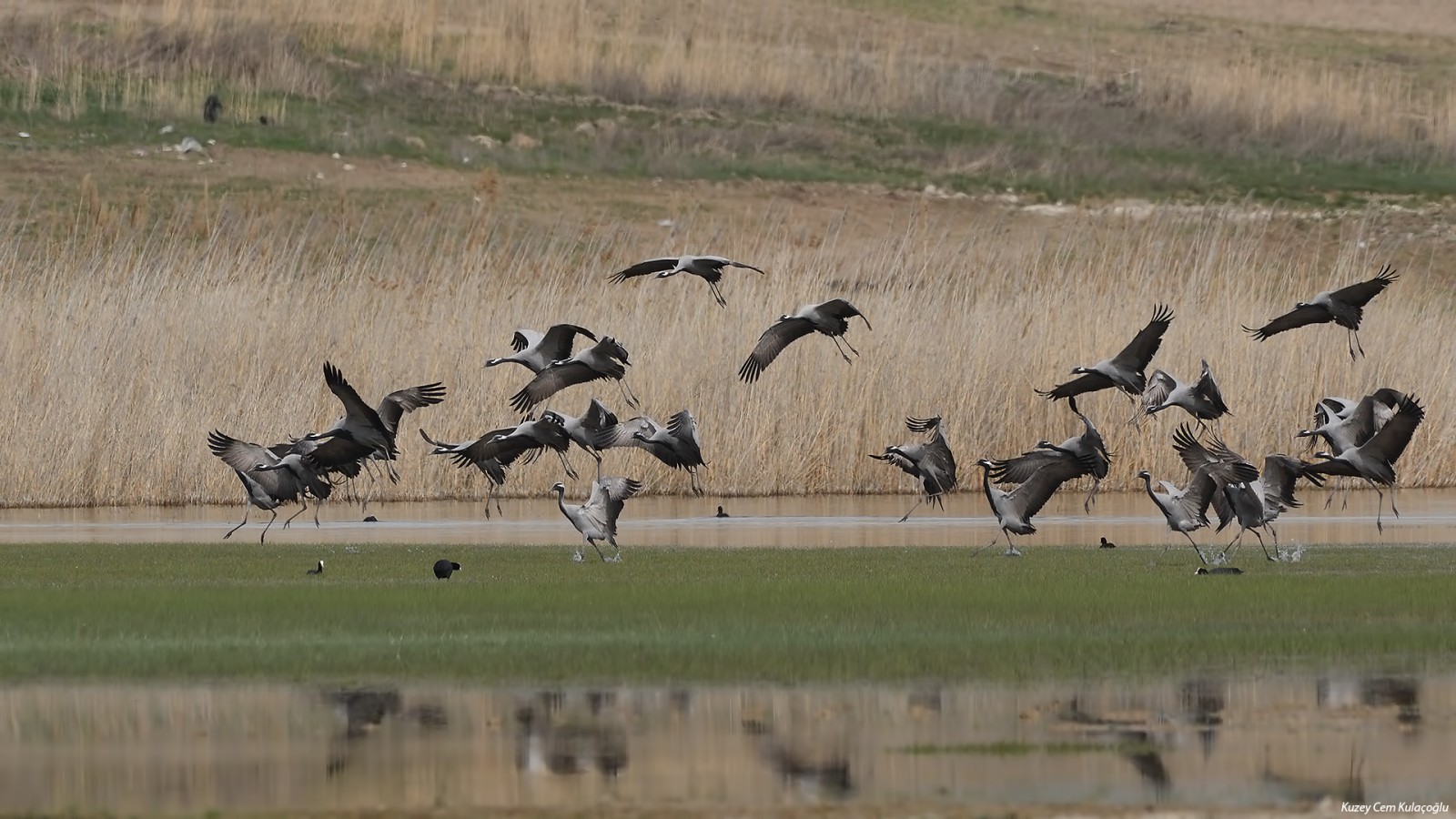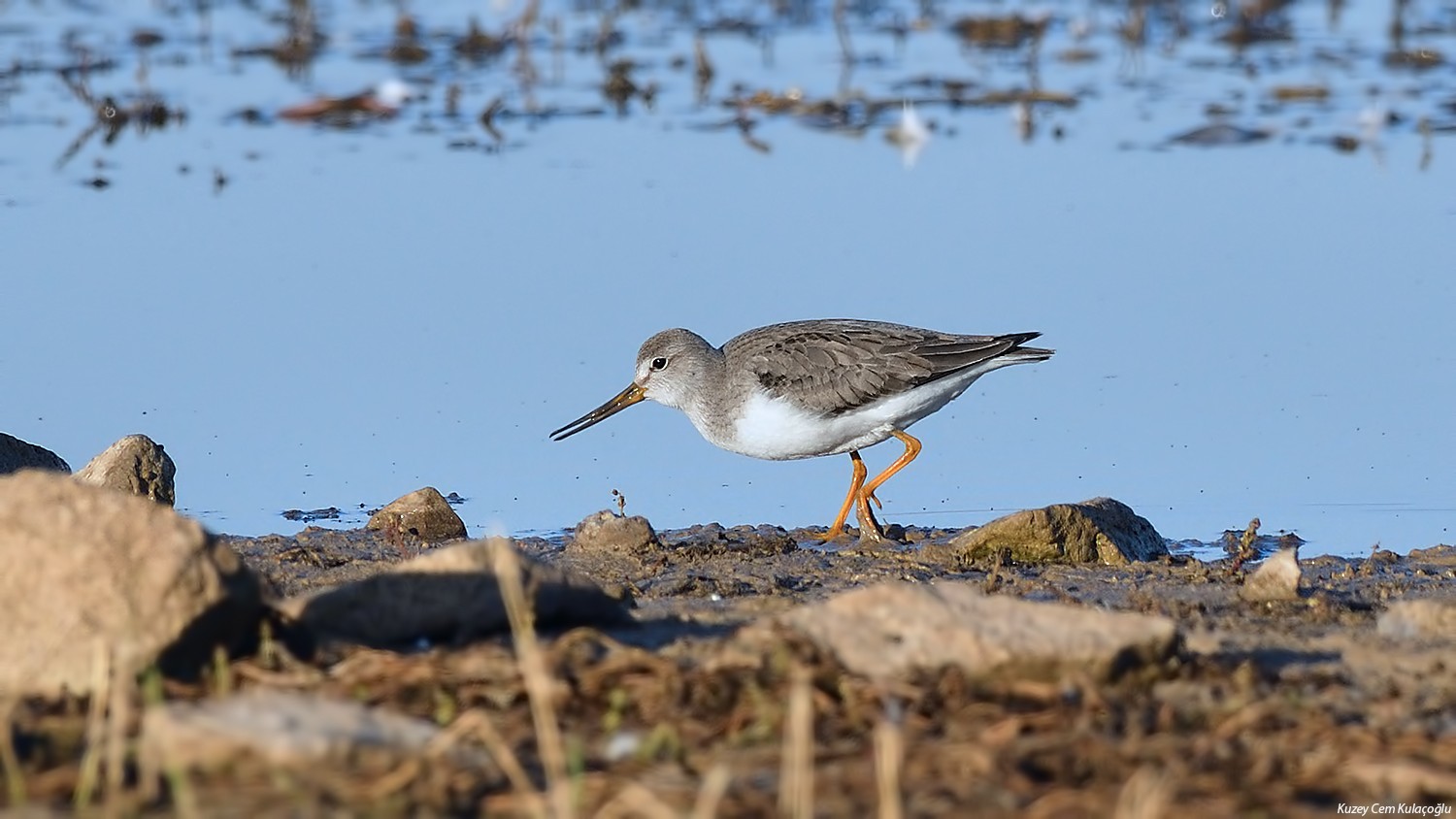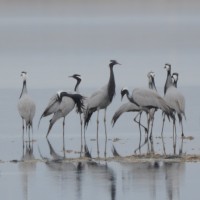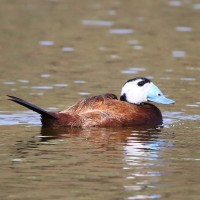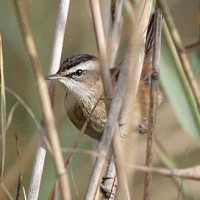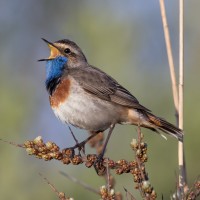Description
A lake ecosystem surrounded by extensive reedbeds and steppe, the flood control dam is the perfect habitat for waterfowl, shorebirds and waders, as well as many reed-dwellling species. When viewed from the top of the dam itself, many species of waterfowl can be seen including Чернь білоока, Чернь червонодзьоба and Савка білоголова among the more ubiquitous grebes and Лиска звичайна. A modest selection of gulls and terns can also be viewed from this point.
When you take the dirt tracks from either side of the dam towards the south you will come near the muddy shoreline which attracts thousands of waders during migration, with many species to be seen among hordes of Брижач, Побережник малий, and Коловодник болотяний; this comes with good prospects of finding scarcer species like Побережник болотяний, Мородунка or Плавунець круглодзьобий. Ходулoчник, Чайка чубата and Пісочник малий also use this spot as breeding grounds, along with perhaps a few others. Breeding species such as Очеретянка тонкодзьоба, Очеретянка велика, Кобилочка солов’їна, Очеретянка середземноморська, Сутора вусата, або синиця вусата, Ремез звичайний and Вівсянка очеретяна make good use of the reedbeds. Especially during autumn migration these reedbeds also host very high numbers of roosting hirundines, wagtails and Просянка; and you can catch a glipse of a Пастушок, crake or Синьошийка stealthily moving through the ground below. Лунь очеретяний are a also a fixture of the reedbeds, and several can be seen patrolling over their favorite patches of reed at any given moment.
Far south of the lake are the muddy plains which host, especially during migration, high numbers of egrets and herons, augmented by flocks of Коровайка бура and Косар білий, or perhaps a group of Пелікан рожевий. If you visit during late March-mid April you might also stumble upon a staging flock of Журавель степовий, which is always a nice bird to see. Also sharing these areas in the post-breeding season are immense numbers of Огар рудий which fill the lake with their honking sounds as they gather in the late afternoon. Roosting marsh terns of 3 species, Крячок чорнодзьобий and Мартин севанський can also be seen here.
Raptors are generally present in small numbers, though nearby breeding Канюк степовий and Боривітер степовий can be seen with ease. During migration and winter additional species such as Скопа, Лунь польовий, Лунь степовий, Кібчик червононогий and Підсоколик малий can be seen, and if you are lucky you might see a wandering Могильник східний from the nearby breeding grounds.
The steppe and hilly terrain surrounding the lake host breeding Жайворонок степовий, Жайворонок сірий [група rufescens] and Кам’янка попеляста; and especially during the autumn migration large numbers of larks, pipits, wagtails, Трав’янка лучна and Кам’янка звичайна make use of these habitats, the latter two usually seen perched on every other wire or fence. Fenced-off gardens can also attract shrikes and flycatchers. During winter these fields can also support large flocks of seed-eaters.
Details
Access
A car is practically a necessity as no public transport will carry you this far. You can take a bus as far as Yağlıpınar Village but after that you'll have to walk.
If you're coming from Haymana Road, take the left immediately after you have passed Yavrucuk Village (39.692249, 32.741794). Drive along this road, then take a right at 39.686185, 32.772293. Drive along until you have reached the stone wall. From here you can look down on the dam.
On both sides of stone wall are dirt tracks leading south, which you can follow until you are at the southern part of the dam.
If you are coming from Konya Road, an alternative route would be to take a right at Yağlıpınar Village and follow the road until you reach the shoreline, around the middle of the dam (https://www.google.com/maps/dir/39.7213488,32.8135236/39.6526985,32.7784951/@39.6936588,32.7863868,17421m/data=!3m1!1e3!4m2!4m1!3e0).
Once you've arrived you can technically park your car and walk along the shore, but this is not recommended as it will result in your birding being significantly harder, as well as safety issues.
Terrain and Habitat
Wetland , Plain , Steppe , Lake , Mud flats , ReedbedsConditions
Wet , Open landscape , Dusty , High water possible , HillyCircular trail
NoIs a telescope useful?
Can be usefulGood birding season
Spring , Autumn , SummerBest time to visit
Spring migration , Autumn migrationRoute
Unpaved road , Paved roadDifficulty walking trail
StrenuousAccessible by
CarBirdwatching hide / platform
NoExtra info
Especially on the weekends this area, most usually the shoreline along the dirt tracks, are used extensively by fishermen, and to a lesser extent families having picnic or barbeques. This can result in a significant reduction in bird activity, so always try to go in the early morning on weekdays.
Also reducing bird activity can be large flocks of sheep and goats, and these flocks are usually accompanied by dogs which can be very aggressive.
The water level is very season-dependent and roads described can be partially or fully submerged during winter or spring. This can result in the above description or Google Maps being inaccurate. The dam also shows a trend of getting larger each year.
Also be wary of mud, as it can result in you getting stuck, in which case a tractor will probably be required. 4x4 vehicles are highly recommended.
